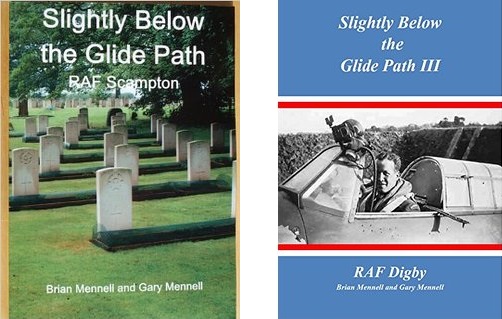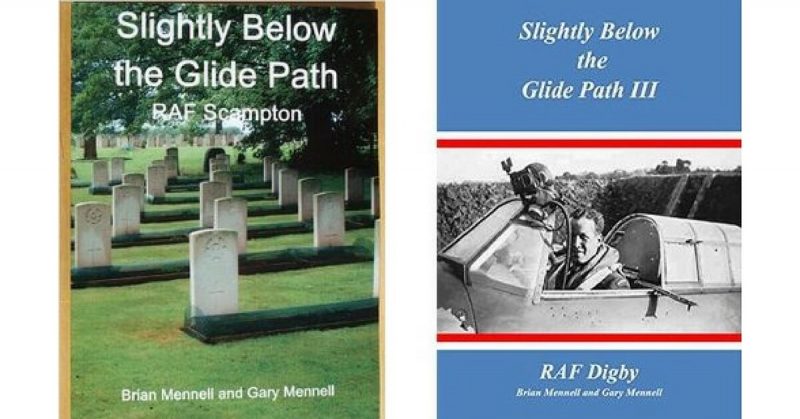I was browsing through a number of military themed pages I follow on Facebook when I came across reference to these books. I asked one of the authors for a review copy and the two books arrived in the mail pdq. I am impressed.
The premise is simple. The authors visit the cemeteries attached to a number of RAF aerodromes and tell the stories of the people buried there. The device offers scope to digress into other stories and all the inevitable connections. It seems so simple, but the thought that has gone into this package masks an awful lot of hard work.
Self-published books can be hit or miss and sometimes they can be a bit of both. But, I have said before that I am right behind the authors and historians doing this stuff. The WHO books department gets a vast amount of reading matter from the best known publishers and it is always pleasing to see the work that they may have rejected or where there just wasn’t enough format or content to warrant their interest finding other avenues. Books like this prove that, despite the power of the Internet, ink is not dead just yet.
These two volumes take us to RAF Scampton – the crucible of the fame of Bomber Command, and to RAF Digby, a base cemented to the commitment of Canada in the defeat of Nazi Germany. Both books look at people killed on combat operations, in accidents on active service and myriad other reasons for people to lose their lives. So, we get the brave and the intensely unfortunate in equal measure. Not all are heroes and very few are even remotely well known; but the range of characters offers a genuine slice of the people involved in wartime operations and a good many who served before and after WW2. The effect of this is to offer a broader history of the places described making them less mysterious or cartoonish. I say this because Scampton, in particular, is anchored to the Dambusters and this inevitably turns thoughts to famous black Labradors and the imagery of Richard Todd flying to the dams in his shirtsleeves.
There was so much more to Scampton and the authors’ device brings it to us.
RAF Digby has an icon of it’s own in the shape of the American poet and airman John Gillespie Magee. I reviewed an excellent biography of him a while back and the book had some influence on the authors here. Magee’s service career was brief and brought to an abrupt end by a mid-air collision in 1941. His poetry lives on and, as most people remember, was paraphrased by Ronald Reagan in his address following the Challenger disaster of 1986. I first found it some time earlier used in a book of Frank Wootton’s aviation paintings and it has always been close to my heart. As with Scampton, there was much more to Digby and a great many people who suffered life’s misfortunes in the most final of ways are featured here.
These books are not new. The Scampton volume dates from 2010 with an updated edition appearing three years later. The Digby book appeared in 2014. They are of a type that invites regular updating as new information comes to light. As such, they fit perfectly well into the world of valued battlefield guides.
It makes sense to me to treat the wartime aerodromes as exactly that – battlefields, because many of them were.
I like these books. They make handy reference works and there is a spirit to them I admire. The authors have enthusiasm and not a little style in the way they tell their stories. The use of archive photography fits well into the limited scale of the format and the impression is one of hard work rewarded with a good product. What’s not to like? I will repeat my mantra to budding self-publishers – do your research, not just of your subject; but of what others are doing. There are a few deservedly successful aviation history publishers who decided to take things into their own hands and produce stylish, sympathetic books the way they wanted them to look. I see a lot of that here. Brian Mennell and Gary Mennell mean business. They know the limitations of their format and they definitely know their territory. Books like these will always be welcome at WHO Towers.

SLIGHTLY BELOW THE GLIDE PATH
RAF Scampton
ISBN: 978 0 9566319 0 9
SLIGHTLY BELOW THE GLIDE PATH III
RAF Digby
ISBN: 978 0 9566319 3 0
By Brian Mennell and Gary Mennell
Fox 3 Publishing
York
